Tree and Forest
1. What is Tree and Forest?
Tree
- In graph theory, a tree is an undirected, connected and acyclic graph. In other words, a connected graph that does not contain even a single cycle is called a tree.
- A tree represents hierarchical structure in a graphical form.
- The elements of trees are called their nodes and the edges of the tree are called branches.
- A tree with n vertices has (n-1) edges.
- Trees provide many useful applications as simple as a family tree to as complex as trees in data structures of computer science.
- A leaf in a tree is a vertex of degree 1 or any vertex having no children is called a leaf.
Example
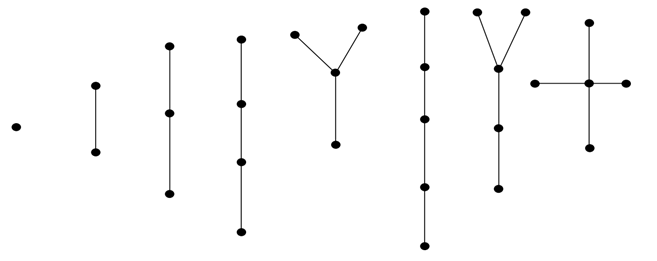
In the above example, all are trees with fewer than 6 vertices.
Forest
In graph theory, a forest is an undirected, disconnected, acyclic graph. In other words, a disjoint collection of trees is known as forest. Each component of a forest is tree.
Example
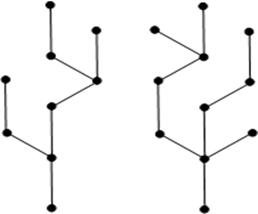
The above graph looks like a two sub-graphs but it is a single disconnected graph. There are no cycles in the above graph. Therefore it is a forest.
2. Properties of Trees
- Every tree which has at least two vertices should have at least two leaves.
- Trees have many characterizations:
Let T be a graph with n vertices, then the following statements are equivalent:
- T is a tree.
- T contains no cycles and has n-1 edges.
- T is connected and has (n -1) edge.
- T is connected graph, and every edge is a cut-edge.
- Any two vertices of graph T are connected by exactly one path.
- T contains no cycles, and for any new edge e, the graph T+ e has exactly one cycle.
- Every edge of a tree is cut -edge.
- Adding one edge to a tree defines exactly one cycle.
- Every connected graph contains a spanning tree.
- Every tree has at least two vertices of degree two.
3. Spanning Tree
A spanning tree in a connected graph G is a sub-graph H of G that includes all the vertices of G and is also a tree.
Example
Consider the following graph G:
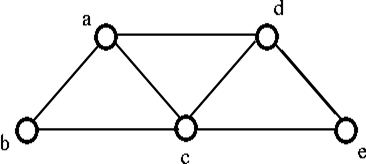
From the above graph G we can implement following three spanning trees H:
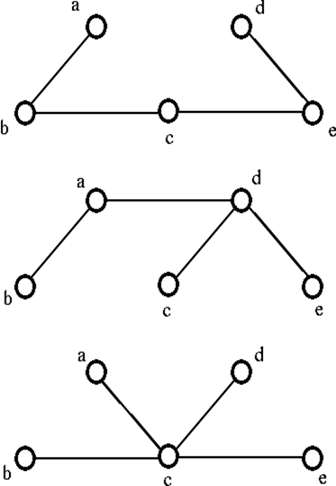
Methods to find the spanning Tree
We can find the spanning tree systematically by using either of two methods:
- Cutting- down Method
- Building- up Method
1. Cutting- down method
- Start choosing any cycle in Graph G.
- Remove one of cycle's edges.
- Repeat this process until there are no cycles left.
Example
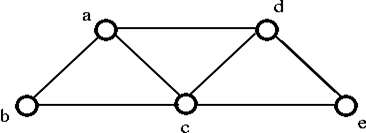
- If we remove the edge ac which destroy the cycle a-d-c-a in the above graph then we get the following graph:
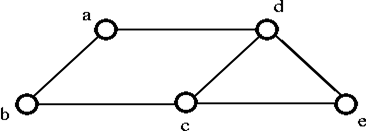
- Remove the edge cb, which destroy the cycle a-d-c-b-a from the above graph then we get the following graph:
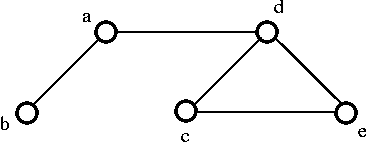
- If we remove the edge ec, which destroy the cycle d-e-c-d from the above graph then we get the following spanning tree:
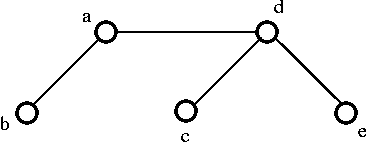
2. Building - up method
- Select edges of graph G one at a time. In such a way that there are no cycles are created.
- Repeat this process until all the vertices are included.
Example
Consider the following graph G,
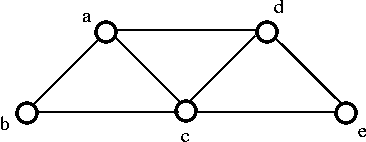
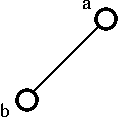
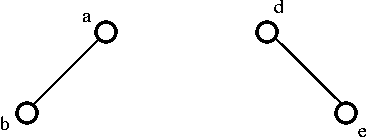
- After that , choose the edge ec,
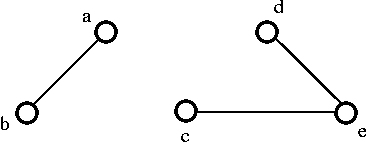
- Next, choose the edge cb, then finally we get the following spanning tree:
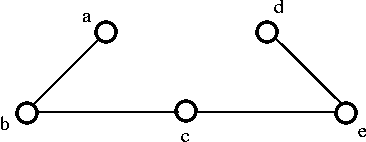
Circuit Rank
The number of edges we need to delete from G in order to get a spanning tree.
Spanning tree G = m- (n-1), which is called the circuit rank of G.
Example
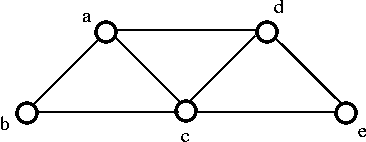
In the above graph, edges m = 7 and vertices n = 5
Then the circuit rank is,
|














 For Videos Join Our Youtube Channel: Join Now
For Videos Join Our Youtube Channel: Join Now










